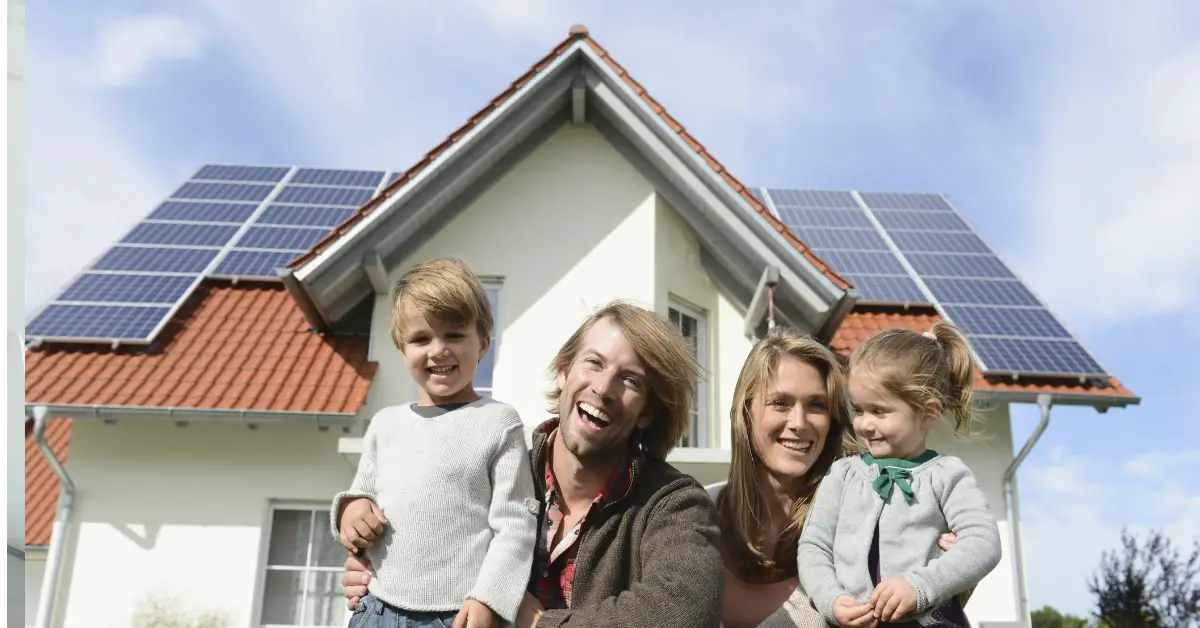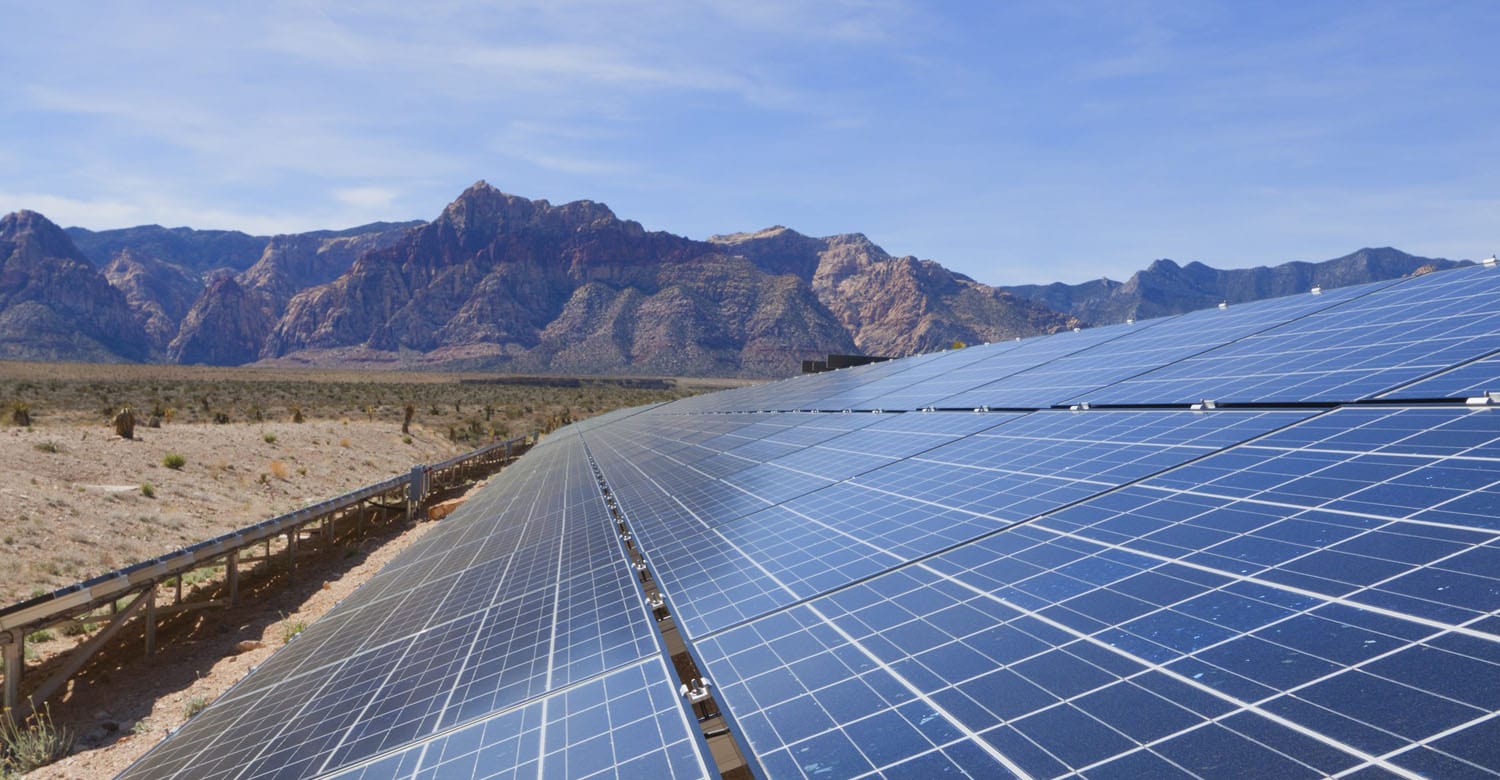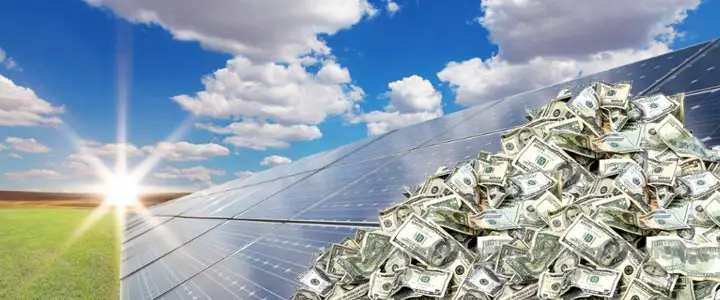How Much Do Solar Panels Save
Switching to a solar energy system could potentially cut your energy bill by 75%. The savings you and your family see will depend greatly on where you live, what the climate is like and your particular energy needs. For instance, an average homeowner in Portland, Oregon, will see total savings of $38,000, whereas a homeowner in Los Angeles could save as much as $90,000 over 20 years.
Many solar energy companies provide a free calculator tool to help you easily estimate the cost and savings of installing solar panels on your home. Different solar calculators may estimate electricity costs in different ways. Numbers can be based on the national average, regional averages or other information you provide.
The average American electric bill is between $100 and $200 per month, and the average yearly energy cost is about $1,500. Depending on how much you pay out-of-pocket for the solar panel system, it could take five to 15 years to break even. To calculate how long it will take you to break even on savings versus the cost of your solar panels, first subtract your incentives and rebates from your costs. Divide that number by the amount you are saving on utility bills per year.
Even if your solar panels generate 100% of your electricity needs, you may still receive a utility bill. However, instead of asking for payments, you will get net metering credits for the month.
One More Important Thing To Know
Some factors could increase your payback period. Before installing solar panels, you need to inspect the condition of your roof. Panels can last 25 years, so if your roof is not in tip-top shape, you might have to make improvements before installing solar panels. If this applies to you, make sure to add these costs to your initial investment.
Overall, solar power can be an expensive proposition, especially with the upfront costs. However, the long-term efficiency they provide can more than offset the initial investment, leading to savings for years to come.
Questions To Ask With A Lease Or Ppa
The SEIA provides a thorough listof items that should be disclosed in a solarleasecontract. Werecommend printing it out and discussing it with your installer. In addition, here are some keyquestions tobe sureto ask:
- What is the term of the agreement?
- What fees or downpayments are due at signing?
- Who receives the solar tax rebates for the system?
- What happens if I need to repair my roof?
- What happens if I sell my home? Is the agreement transferable?
- Who is responsible for maintenance, repair, and monitoring?
- What happens if the system generates less power than planned?
- With a lease: How much does my lease payment increase over time?
- With a PPA: How much does my per-kWh rate increase over time?
- With a PPA: Is there a monthly fee? Does it increase over time?
- Is there an option to end the contract early? Is there a termination fee?
- Is there an option to purchase the system at the end of the term?
You May Like: How To Make A Solar Powered House
System Panels And Equipment
The cost of your system is also dependent on the number of panels you need and the type of panels you select.
The average home solar system is 5kW, although larger homes may require a 6kW system. Assuming your system uses 250-watt photovoltaic panels, that equates to approximately 20 panels per home, at the cost of roughly $11,000. Of course, prices increase from that starting point for larger systems requiring more panels.
Home solar systems also typically require an inverter. Most solar companies will design your solar system with these components included, but selecting specific inverters or batteries, such as a Tesla Powerwall, may increase your overall cost.
What Is Considered A Good Solar Payback Period

More important than payback time is a concept called Internal Rate of Return, or IRR for short. IRR is expressed as a percentage of return on investment, and answers the question, Considering the estimated future benefits of this investment, what percentage return would you need to get from another investment to be equal to this one?
In the solar industry, we use IRR to compare the return on an investment in solar with the returns of other popular ways to invest.
For example, a long-term investment in a broad stock index fund has historically resulted in an IRR of about 8% per year. A home solar system in a state like Virginia, where the payback time of an investment in solar is around 12 years, has an IRR of about 8%.
The good news is, there are many states with better IRR and payback time than Virginia, especially in the northeast and California, where electricity costs are very high. For example, people in Massachusetts, New Jersey, California, and New York can expect IRRs of between 16 and 20 percentdouble or more of the average return of a long-term index fund.
See the solar payback period for your specific home
Read Also: How To Connect Solar Panels To The Grid
Factors Affecting Solar Payback In Alberta
Variable cost of grid energy in Calgary including cost of distribution, transmission and local access fee, compared to the levelized cost of a grid-tied solar power system in Alberta.
How Much Does A Solar Panel Cost
Prices have been coming down steadily over the years. The total cost will depend on how many kilowatts of power your array will generate. According to consumer reports, after solar tax credits are accounted for, the cost for a solar panel system on an average-sized house in the U.S. in 2021 ranges from $11,000 to $15,000.
Recommended Reading: Is Solar Power Cheaper Than Electricity
If Your Firm Goes Bust Payments Won’t Transfer Automatically
If you’re on a feed-in tariff , your payments won’t transfer automatically to a new provider if your current supplier goes bust.
This is different from the smart export guarantee if you’re on a FIT, regulator Ofgem will appoint a new supplier for you, but payments won’t start until your contract starts.
The new company will contact you to confirm your tariff information and it must also confirm whether it’s a FIT licensee. If it’s not, you may need to find another FIT supplier to continue to receive payments.
As above, you’re able to choose a different supplier from the one Ofgem appoints for you if you wish, but it shouldn’t really matter, as your FIT rates won’t change.
MSE weekly email
Solar Panel Costs In : National Pricing For Solar Panel Systems
On average, a 10 kilowatt solar panel installation costs $20,424 after taking into account the federal solar tax credit . Generally, solar panels will cost between $15,000 and $25,000.
What is the average cost range for a solar installation? For a 10 kW solar panel installation in the United States, quotesrange from $17,612 to $23,236 after taking into account the federal solar tax credit .
Recommended Reading: How Much Maintenance Do Solar Panels Need
How Many Solar Panels Are Needed To Power A Home
At the risk of stating the obvious, this all depends on the size of your home and the amount of power you consume. It will also depend on the amount of physical space you have on your roof to lay the panels. A typical rooftop solar has about 24 panels, but some larger systems have up to 40 panels.
Below is a breakdown of system sizes in kW and the number of solar panels required.
How Much Will Your Electric Bill Be After Installing A Home Solar System
The truth is, it depends on a few aspects. Your solar installations energy production, your local electric rate, and your households energy consumption.
With optimized household energy consumption and a maximized home solar installation, you can develop a financial equation that balances your electric bill and energy needs. Then, add up the thousands of dollars youre not spending over the years by using home solar.
Plus, there are bonus points. Because of the costs you avoid in going solar, your benefits will be even greater in states with high electric rates.
And, as energy prices spiral upward, your financial security will become even more advantageous over the 25-year lifecycle of your home solar system. Take control with solar. Its your home, your energy.
See if you qualify for the26% federal tax credit
Thanks so much! We’ll call you shortly.
Sorry, we are not taking new customers in your area yet
You May Like: How To Size A Solar Pv System
Do You Really Save Money With Solar Panels
Considering the average solar system pays for itself in 3.5 years, and they come with a 25-year warranty, its pretty safe to say that solar is going to save you a lot of money in the long term, though that being said it is a significant outlay. If you view it as an investment, you will have less trouble dealing with the initial cost.
Besides, lets not forget there is interest-free finance available. It would be like paying your regular bill off over a 4 year period, but at the end, you own the unit!
Do Solar Companies Put A Lien On Your House

Liens. If youre not buying your solar panels with cash, the manufacturer may place a lien or Uniform Commercial Code filing on your property to make sure you keep paying for them. Unfortunately, when you go to refinance or sell the property, its generally trouble to have any kind of lien on your home.
Read Also: How To Ground Solar Panels
Buying Solar Panels From Livestainable
Next time you want to buy affordable solar panels in South Africa, make sure to purchase them from LiveStainable. We provide our customers with effective solutions that are not only sustainable, but they work too.
Once you have chosen the right solar panel for you, make sure to add it to your cart before checking out. Deliveries usually take anywhere between two to seven working days.
It is important to note that our customers need to register as active user on our website before any purchases can be made. If you do not have an account registered to your name, you will not be able to buy any products on our online store.
We deliver our products to all areas in South Africa, and we will also provide tracking details for our customers once their order has been approved, paid for and ready to ship straight to your doorstep.
How Long Does It Take For Solar Panels To Pay Off
Now that you have the formula, you can easily answer this question yourself. In addition, here are some final things to bear in mind:
- State/employer incentives will also reduce years to payback.
- If you live in a sunnier state with great weather, youll have more hours of sun, therefore fewer years to payback.
- As electricity costs increase , your savings will increase, thus fewer years to payback. This formula doesnt account for this.
- Also, panel performance decreases over time by roughly 0.7%, causing the opposite effect.
Consider those sleepless nights banished!
Image Credit under CC License from Pixabay
Don’t Miss: How Does Solar Heating Work
Brighter Days With Sunrun
Theres plenty of sun to go around. Join the solar energy market. To get you on your way, Sunrun offers solar leases and power purchase agreements . These options both give you the energy cost control and environmental benefits of a home solar system. We also have cash options if you want to buy and maintain your own solar system.
Sunrun is the easiest, smartest way to join the solar energy revolution. All Sunrun service agreements include 25 years of support*guaranteed.
To make the right decision for your budget, its good to have a solar lease and PPA bills explained.
In general, a solar company does the installation. The solar company then leases the equipment installed on your roof to you at a fixed monthly amount. Or, they can sell electricity that the panels generate to you at a set price per kilowatt hour. Heres how they affect your bill:
Solar Lease:
If you like consistency, this is the one for you. With a solar lease, the bill from your solar provider is the same every month. This fixed figure is established by the amount of power your panels are designed to yield over their 25-year lifespan. That amount is then divided into consistent monthly payments for the term of your lease.
Solar PPA:
If youre more inclined to play the odds, consider a PPA. Under a Solar PPA, you pay the solar company a fixed rate per kilowatt hour generated by your home solar installation. This rate is generally less than that charged by the electric company.
What Is The Cost Of A Solar Panel Installation For An Average 2000 Square Foot Home Today
The average cost of a residential solar panel installation in 2021 ranges between $18,000 and $20,000, before applying tax credits or other incentives that may be available where you live. This works out to between $2.75 and $3.35 per watt of solar installed, depending on your location and the brands of solar equipment used.
Once you take the federal solar tax credit into account, the overall cost drops to an average of between $13,320 and $14,800 – thats almost 80% lower than the cost of solar 10 years ago! Our solar panel cost and savings calculator will show you local incentives you may be eligible for to help lower the upfront costs.
Also Check: Can You Recycle Solar Panels
You Can Still Switch Energy Supplier
If you have solar panels, don’t think this locks you in to your energy provider so you can’t get cheaper bills you can join the MSE Cheap Energy Club to stick on the cheapest deals .
Your energy provider doesn’t need to be the same as the supplier that pays you for your solar-generated energy, so you’re free to switch.
Also, with a modern SMETS 2 smart meter, two firms can use the same device, so you don’t need to get a new smart meter.
It’s just as simple to switch your supplier for the export tariff, and as rates vary wildly between firms, make sure you’re always getting the best rate possible see what each firm pays.
Rebates And Incentives: Reducing Your Solar Costs
Weve been talking about factors that add on cost to a solar installation, but its also equally essential to consider the ways you can reduce your costs with solar rebates and incentives. Tax credits, cash rebates, performance-based incentives , and energy credits are all ways you can get money back on a solar installation. The availability of these types of incentives almost always depend on where you live utilities, cities, and states all usually offer their own solar incentives to people living in their service areas.
Read Also: How Many Solar Panels Do I Need For 1000 Watts
Is There A 500 Watt Solar Panel
What is a 500- watt solar panel? Among the most innovative of the solar industrys developments in recent years is the 500- watt solar panel. The 500- watt solar panel was designed to meet the energy output needs of medium and large solar systems using fewer panels, ultimately increasing efficiency and lowering costs.
Approximate Costs Of Solar Systems After The Rebate

The range of prices in Australia below is mainly down to the quality of the hardware used in the installation. To use a car analogy , expect the lower price range to be Kia level brand and the upper cost to be a BMW level brand. Ill leave you to decide if BMWs are worth paying more for than Kias!
Approximate cost of a good quality solar system installation with Tier 1 solar panels as at November 2021 in Australia:
| System size | |
| 27 | $8,000 $12,000 |
Update: November 2021 There have recently been major disruptions to solar panel supply , which have pushed prices of 6.6 kW systems up by about $1,000. Current prices of panels are fluctuating daily so dont be surprised if your quotes are only valid for a few days.
Note that the above assumes the use of 370W solar panels, so the final solar panel capacity may be a bit more or less than the figures mentioned above.
See Real-Time Australian Solar Pricing
The costs quoted above are based on thousands of data points. To see real-time, average prices being paid for full system installations of various capacities in your state, check out the SolarQuotes Solar Price Index.
Microinverter/Optimiser Cost
If you want a good quality microinverter or optimiser system installed, expect to add around 20% in cost to the above price ranges.
Budget Inverters
If you want to downgrade to a reputable budget inverter , you may be able to save about $700 on these prices.
Finding The Money
Don’t Miss: Is Solar Worth The Investment
